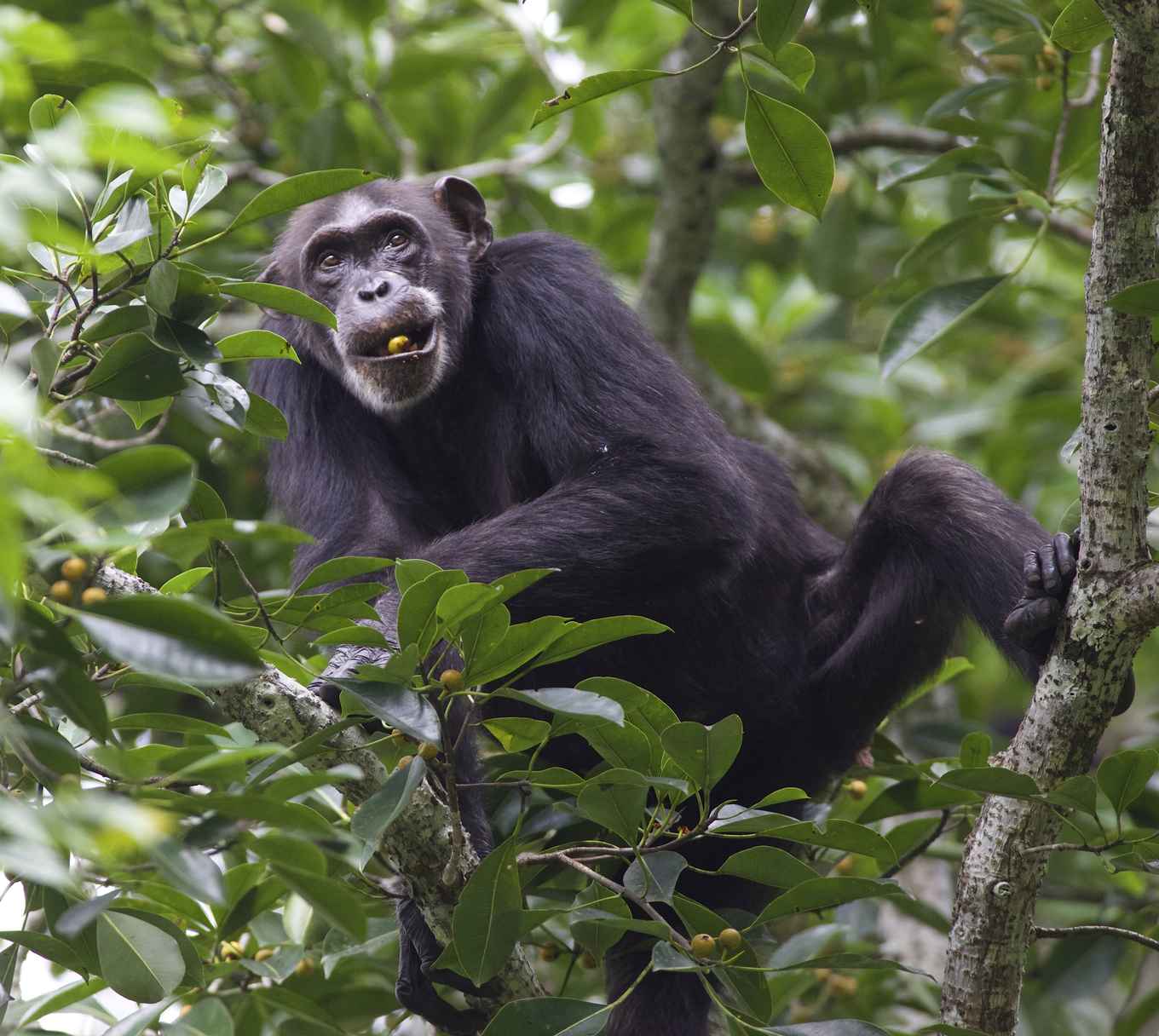Travel reveals the mind
Exploring the minds of our primate cousins in the wild, using under-exploited observations of their travel paths
15 April 2021

Imagine looking down on a huge outdoor market from high in the sky, perhaps from a drone hovering quietly above. The people below move in different ways. Some wander in an aimless, haphazard way among the stalls, others take bee-line routes across the market. More complicated paths are visible, too. Some look highly efficient, Others are full of backtracking and unnecessary circularity.
Travel paths
If you could distinguish individuals, and watch them on many occasions, probably these patterns would change. Some individuals would use just the same path on every occasion, a habitual route, others would change as the seasonal fruits and vegetables change, in response to changing menus. And we’d begin to learn about social aspects of what at first sight was just shopping, as networks of repeated contacts betray who is friendly with whom. You can get a good idea of people’s knowledge, their needs, their ability to think ahead, how they learn over time: and all this, just from watching their travel paths.
‘We wondered whether we could use this sort of approach to understand what wild animals know and think’, says lead author Prof. Karline Janmaat from the UvA Institute for Biodiversity and Ecosystem Dynamics and Leiden University. Together with an international team of researchers from 14 different Universities and Research Institutes they published the results of a global survey that reveals that the right information is already in existence as a by-product of other studies, collected by hundreds of researchers over many years, on 164 populations of primates.
’We found that the original researchers are willing to share their data and collaborate, to understand how cognition varies among different species. Their data comes, not from drones, but from small GPS devices, used routinely in primate fieldwork: sometimes these are attached to the animals themselves, but in many studies a researcher follows the animals, usually noting a rich variety of background information on what they are doing and for how long’, explains Janmaat.
Travel decision making
The team developed a conceptual framework to highlight ways in which these data can be analysed. Many of these analyses can be conducted using only ranging data (x and y coordinates and time), but when a log of behaviour and knowledge of the local ecology are also available, and there often are, these relatively simple analyses can be made more powerful.
‘The framework has a very practical edge but creates far reaching opportunities at the same time,’ emphasizes Emiel van Loon, co-author of the study and colleague of Janmaat at IBED-UvA. ‘The practical part of it allows us to re-use and recombine existing tracking data to answer both old and new questions on primate cognition. But more fundamentally, it lays the groundwork for a family of analyses that sit between empirical and theoretical approaches. They will allow to better combine and reconcile both research approaches and lead all sorts of new insights.’
Primate cognition
‘At the moment, primate cognition is studied by comparing indirect measures of ability like brain size across many species, or by experiments that pose artificial problems to individuals in captivity; evidence from travel decision-making among many wild populations will complement these approaches’, explains Janmaat. As well as opening the door for large-scale collaborations with existing data, the team hopes to inspire young scholars to collect comparable data on other, as-yet-unstudied, primate species.
’Our ultimate dream is to set up a consortium to support data sharing and collaboration among primatologists. Hopefully this attracts MSc students and PhD candidates from around the world to share and compare their collected data to these existing datasets’. Collecting such data is particularly urgent because so many species are now threatened with extinction in the wild. Even since 1970, two-thirds of all vertebrate populations has been lost, and large, day-living animals like primates have been impacted more than most. ‘The current generation of young scholars may be one of the last to be able to collect data on primates living in natural settings’, Janmaat concludes.
Publication details
Karline R.L. Janmaat, Miguel de Guinea, Julien Collet, Richard W. Byrne, Benjamin Robira, Emiel van Loon, Haneul Jang, Dora Biro, Gabriel Ramos-Fernandez, Cody Ross, Andrea Presotto, Matthias Allritz, Shauhin Alavi, and Sarie Van Belle: ‘Using natural travel paths to infer and compare primate cognition in the wild,’ in iScience (2021). DOI: https://doi.org/10.1016/j.isci.2021.102343
